
Kilmainham Gaol is a former prison in Kilmainham, Dublin, Ireland. It is now a museum run by the Office of Public Works, an agency of the Government of Ireland. Many Irish revolutionaries, including the leaders of the 1916 Easter Rising, were imprisoned and executed in the prison by the British.
The Peel Art Gallery, Museum and Archives (PAMA) is a museum, art gallery, and archives for the Regional Municipality of Peel and are located in Brampton, Ontario, Canada. Previously, it was the Peel Heritage Complex. Its facilities were originally the Peel County Courthouse, Brampton Jail, a land registry office, and a county administration building. It is opposite Gage Park and Brampton City Hall.

The Arizona Historical Society (AHS) is a non-profit organization whose goal is to collect, preserve, interpret, and disseminate the history of Arizona, the West, and Northern Mexico as it pertains to Arizona. It does this through 4 regional divisions. Each division has a representative museum. The statewide divisions are as follows: Southern Arizona Division in Tucson, the Central Arizona Division in Tempe, the Northern Arizona Division in Flagstaff, and the Rio Colorado Division in Yuma. It was founded in 1884.
The Bradford County Jail served as the jail in Bradford County, Pennsylvania from 1873-1991. It was located in Towanda, Pennsylvania.
The Bradford County Museum is a local history museum in Towanda, Bradford County, Pennsylvania. It located in the building which previously housed the Bradford County Jail. It is owned and operated by the Bradford County Historical Society, which has been in operation since 1870.
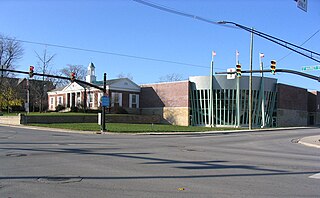
The Allen County Museum is located in the city of Lima, the county seat of Allen County, Ohio, United States. Occupying a half city block, the museum campus includes the main museum building, a log house, the MacDonell House, a Shay Locomotive display, the Children's Discovery Center, genealogy and local history library, railroad archives, and the Children's Garden. The museum is accredited by the American Alliance of Museums. According to recent reports of the American Alliance of Museums Accreditation Department, less than 800 museums, out of more than 11,000 in the United States, are accredited. Standards for accreditation apply across the board to both small and large institutions.

Panhandle–Plains Historical Museum is a history museum on the campus of West Texas A&M University in Canyon, Texas, U.S.A., a small city south of Amarillo. The museum's contents are owned and controlled by the Panhandle-Plains Historical Society, while West Texas A&M University and the Texas A&M University Board of Regents maintains and provides the facilities. Panhandle–Plains Historical Museum claims to be the largest history museum in the state of Texas with 70,000 visitors annually and more than three million artifacts.

The Oregon Historical Society Museum is a history museum housed at the Oregon Historical Society in downtown Portland, Oregon, United States. The museum was created in 1898 and receives about 44,000 visitors annually.
Historic preservation in New York is activity undertaken to conserve forests, buildings, ships, sacred Indian burial grounds, water purity and other objects of cultural importance in New York in ways that allow them to communicate meaningfully about past practices, events, and people. Governmental programs for historic preservation range from Federal ownership and active operation of sites to grants and subsidies provided by state government, municipal support of museums and interpretative displays. Nonprofit programs include activities of statewide and local historical associations and museums, and activities of historical societies and museums at the national level. Quasi-governmental organizations, such as the New York State Thruway Authority and Thousand Islands Bridge Authority, play a role as well. Private endeavors, such as investment and other choices made by private landowners to conserve historical features of their properties, are significant but less visible and include groups such as the Historic Districts Council, The New York Landmarks Conservancy and the Preservation League of New York State. During the reconstruction of the World Trade Center site in July 2010, a team of archaeologists discovered a 32-foot-long boat. The craft was at least 200 years old, dating from a time when the Hudson River was partly filled with trash and debris because of a rapidly expanding lower Manhattan.
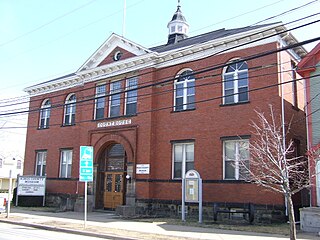
The Kings County Museum is a museum located in Kentville, Nova Scotia, Canada exploring the history of Kings County, Nova Scotia. It is housed in the restored 1903 Kings County Courthouse. The Museum hosts a variety of permanent and changing displays about Kings County. It is also home to the Parks Canada National Commemorative New England Planters Exhibit.
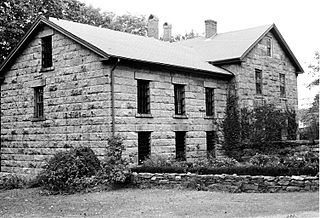
The South County History Center, which formerly operated as the Pettaquamscutt Historical Society, is a nonprofit organization in Kingston, Rhode Island, United States, that preserves and interprets the material culture of South County through exhibits and study of archival, library and artifact collections.
The Schenectady County Historical Society, located in Schenectady, New York, was established on July 14, 1905, under the Membership Corporation Laws of the State of New York. The Society is an independent not-for-profit corporation, not a unit of government. Its stated mission as embodied in its constitution was, and remains, “to promote and encourage original historical research; to disseminate a greater knowledge of the history of the State of New York and particularly of Schenectady County; to gather, preserve, display, and make available for study artifacts, books, manuscripts, papers, photographs and other records and materials relating to the early and current history of Schenectady County, New York and of the surrounding area; to encourage the suitable marking of places of historic interest; to acquire by purchase, gifts, devise, or otherwise the title to or the custody and control of historic sites and structures.”
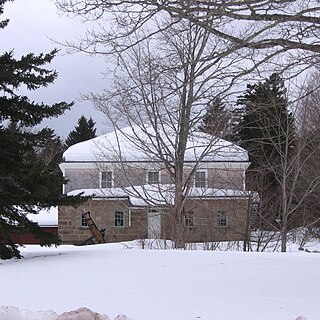
The Albert County Museum is located in Hopewell Cape, New Brunswick. The Museum consists of eight buildings on a six-acre site and features twenty-two themed galleries. All of the buildings are original to the site and are part of the overall history presented. The County Tax Office, County Records Office and County Gaol are from the time of the creation of Albert County in 1845. The County Court House on the site was built in 1904 to replace the original that had been lost in a fire earlier. The complex encompasses what was known as the Shiretown (capital) of Albert County. The Albert County Museum is owned and operated by the Albert County Historical Society Incorporated, a Registered Canadian Charity.
Brunswick Historical Society (BHS) is the local historical society serving the town of Brunswick, New York, United States. It was organized in 1974 and officially chartered in 1981. It moved into its first and current home, the Garfield School in Eagle Mills, in 1988. After sharing the Garfield School with the Brunswick Community Library for more than twenty years, the Library moved to a different location in 2009 and in 2010, BHS expanded into both halves of the former two-room schoolhouse.

The Deaf Smith County Historical Museum in Hereford in Deaf Smith County, Texas, seeks to preserve the West Texas pioneer heritage with a collection of both indoor and outdoor exhibits. The county is named for Erastus "Deaf" Smith, a famous scout during the Texas Revolution.
The Lake Odessa Area Historical Society and Museum in downtown Lake Odessa, Michigan, is home to a variety of historical items pertaining to the Lake Odessa area including an impressive collection of artifacts from a German POW camp that existed near Lake Odessa area during World War II, a Pere Marquette Railroad Depot built in 1887, a restored Grand Trunk Caboose, various local historical displays, the Ionia County Genealogical Library, and the Hosford House. Operations are determined by a board of directors but the historical society is solely managed by the president, John Waite. The museum is a private, non-profit museum completely self-funded through various events and through philanthropists.
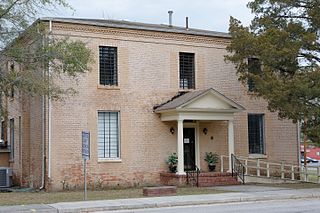
Hampton County Jail, also known as Old Hampton County Jail and Hampton County Museum, is a historic jail located at Hampton, Hampton County, South Carolina. It was built in 1879-1880, and is a two-story, three-bay-wide brick building, with a central, one-story entry portico on the front facade. The jailkeeper's living quarters occupied the first floor, while the second floor was dedicated to the cellblocks. The jail was dramatically altered about 1925, and a third time in the 1960s. The jail was the only holding facility for newly arrested persons in Hampton County until it closed in 1976.
Founded in 1916, the Columbia County Historical Society and CCHS Museum & Library collects, preserves, interprets, and presents the history, heritage, and culture of Columbia County, New York, and serves residents of all eighteen Columbia County towns and the city of Hudson.















